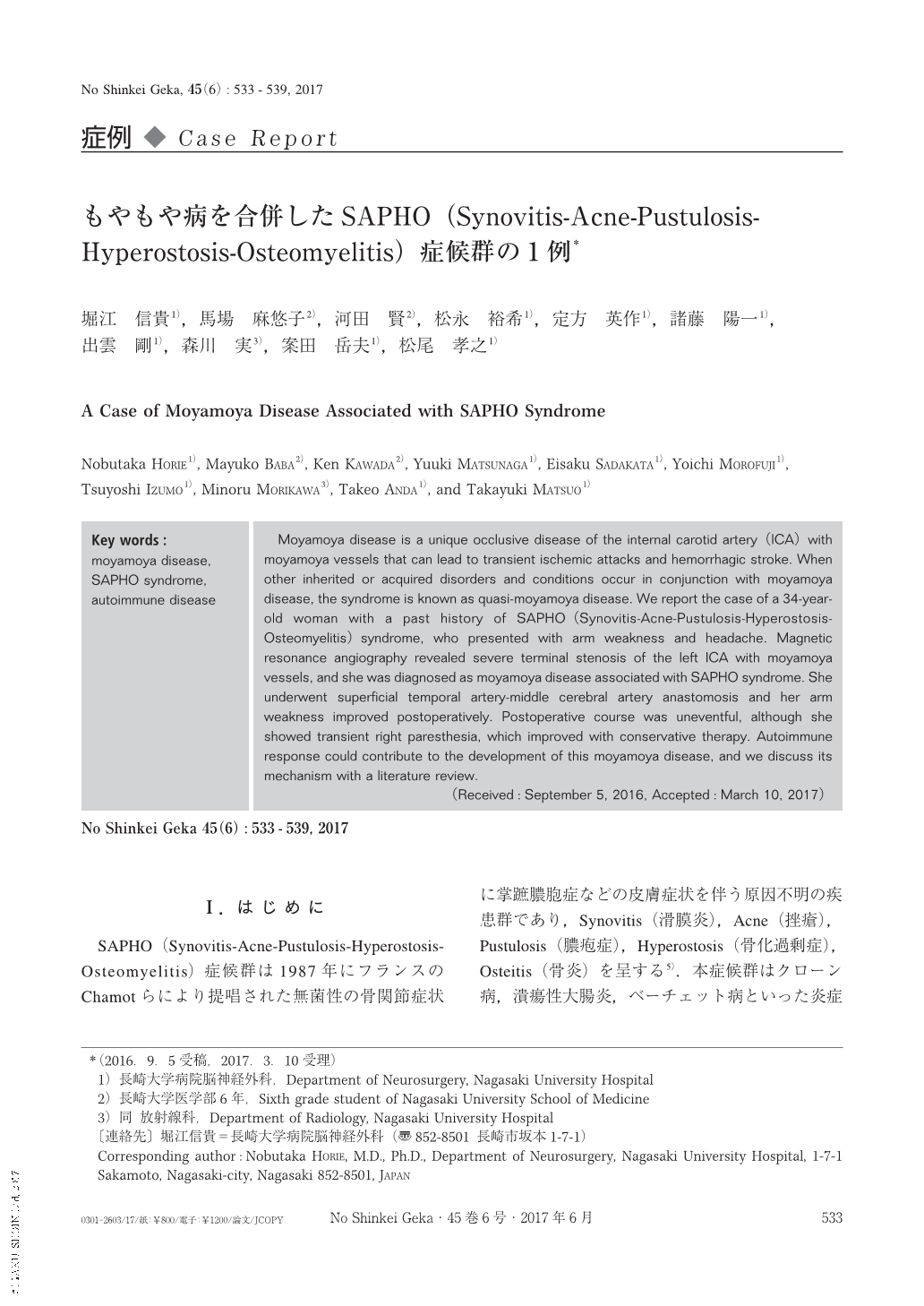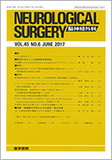Japanese
English
- 有料閲覧
- Abstract 文献概要
- 1ページ目 Look Inside
- 参考文献 Reference
Ⅰ.はじめに
SAPHO(Synovitis-Acne-Pustulosis-Hyperostosis-Osteomyelitis)症候群は1987年にフランスのChamotらにより提唱された無菌性の骨関節症状に掌蹠膿胞症などの皮膚症状を伴う原因不明の疾患群であり,Synovitis(滑膜炎),Acne(挫瘡),Pustulosis(膿疱症),Hyperostosis(骨化過剰症),Osteitis(骨炎)を呈する5).本症候群はクローン病,潰瘍性大腸炎,ベーチェット病といった炎症性腸疾患,自己免疫疾患との合併報告が多く,自己抗体の関連についても研究が進められている9).今回われわれは,SAPHO症候群に合併したもやもや病の1例を経験したので,発症メカニズムについて文献的考察を加えて報告する.
Moyamoya disease is a unique occlusive disease of the internal carotid artery(ICA)with moyamoya vessels that can lead to transient ischemic attacks and hemorrhagic stroke. When other inherited or acquired disorders and conditions occur in conjunction with moyamoya disease, the syndrome is known as quasi-moyamoya disease. We report the case of a 34-year-old woman with a past history of SAPHO(Synovitis-Acne-Pustulosis-Hyperostosis-Osteomyelitis)syndrome, who presented with arm weakness and headache. Magnetic resonance angiography revealed severe terminal stenosis of the left ICA with moyamoya vessels, and she was diagnosed as moyamoya disease associated with SAPHO syndrome. She underwent superficial temporal artery-middle cerebral artery anastomosis and her arm weakness improved postoperatively. Postoperative course was uneventful, although she showed transient right paresthesia, which improved with conservative therapy. Autoimmune response could contribute to the development of this moyamoya disease, and we discuss its mechanism with a literature review.

Copyright © 2017, Igaku-Shoin Ltd. All rights reserved.


